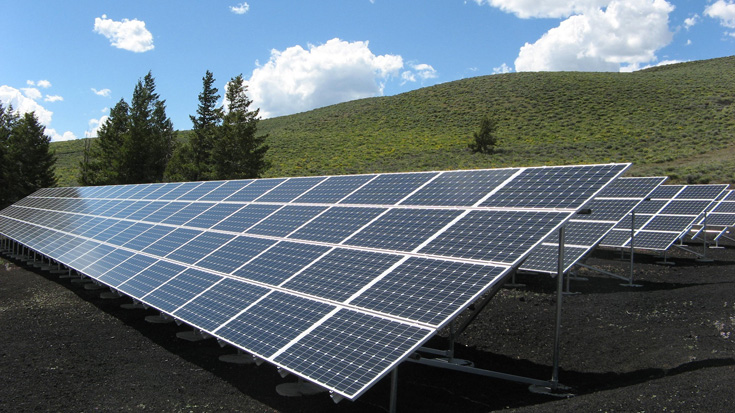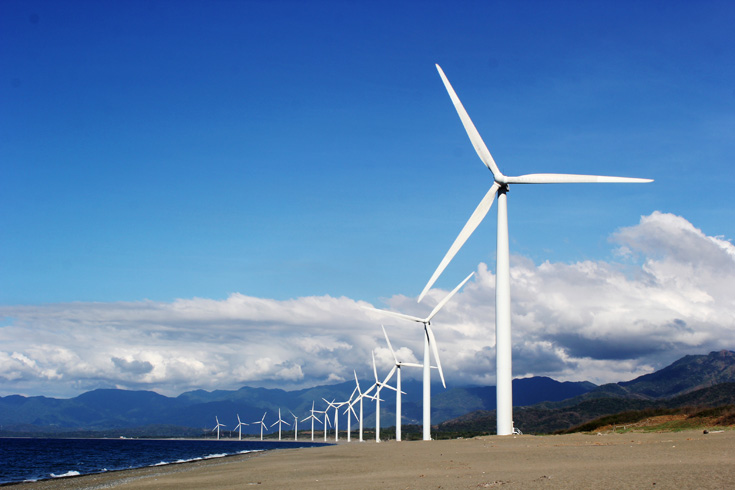Guide to Renewable Energy Technology
Discover how to build a green energy future with renewable energy.

Published December 2021. Last Updated January 2022
What is Renewable Energy?
By definition, renewable energy comes from processes or sources that are continually being replenished. These include, for example, solar, wind, geothermal and hydropower.
Renewable resources are virtually inexhaustible in the long term but are limited in terms of the amount of energy generated per unit of time.
These sources are frequently considered to be green or clean energy, although there are major differences. Renewable energy sources are recyclable and clean energy doesn't release pollutants such as carbon dioxide into the atmosphere. Green energy originates from natural sources.
However, not all types of renewable energy are entirely green or clean. For instance, hydropower plants can cause deforestation and damage natural habitats.
Types of Renewable Energy
Each renewable energy source has advantages and disadvantages. They will depend on factors including location, the time of year, and usage requirements.
Here we focus on the main renewable energy sources:
1. Solar Power
The sun has enormous potential to meet our energy needs, however, the challenges have always been around energy storage and harnessing.
Solar energy, generated by solar or photovoltaic (PV) cells, is currently used to heat buildings and water, as well as power our devices. These solar PV cells are typically made of silicon and are designed to convert sunlight into electricity, creating power.
Rooftop solar panels are able to provide domestic power, while community co-operative projects and solar farms are designed for large-scale energy generation.
In addition, solar power systems are clean energy sources as they do not produce pollutants or greenhouse gases. As long as the panels are responsibly manufactured and positioned correctly, they can also be considered green energy since they do not have a negative environmental impact.

2. Hydroelectric Power
This is currently one of the most popular renewable resources, although wind power is rapidly gaining ground.
Hydroelectric power generation systems work similarly to wind-generated power. They harness fast-running water in rivers to drive turbine blades, therefore producing energy. Water flowing through pipes or penstock in a hydroelectric power plant drives the blades of a turbine which is connected to a generator to produce electricity.
Conventional hydropower plants comprise:
-
Moving water systems where the force of the current exerts pressure on a turbine
-
Impoundment systems where water is stored in reservoirs behind dams on streams and rivers and is then released through turbines to generate electricity as required
Hydroelectric plants are a renewable energy technology but are not necessarily green energy. They have an adverse impact on the microclimate, their surroundings, and animal populations. Nevertheless, if carefully managed, small-scale hydroelectric power plants under 40 megawatts don't have a significant effect on their surroundings.
3. Wind Power
During the day, air over land heats up faster than air over water. As warm air over the land expands and rises, cooler and denser air rushes to take its place. This creates wind. At night, the situation is reversed because the air cools faster over land than water.
Similarly, in the upper atmosphere surrounding the earth, wind is created because the earth near the Equator is warmer than near the North and South Poles. Due to this cycle, wind is considered to be a renewable resource for generating power.
Wind energy works in the same way as a traditional windmill, using wind power to turn the blades. Turbines drive a generator that produces electricity in turn.
Offshore wind farms are less intrusive and able to harness the typically higher wind speed out at sea, resulting in increased energy production. On-shore wind turbines must be located in places where the wind is strong, such as on top of hills or open countryside. They are affected by climate conditions, damp and bad weather.
It is also important to be aware that wind energy is clean but not necessarily green energy. This is because of the processes involved with the manufacture and installation of the turbines, and also the potential impact on wildlife.

4. Biomass Electricity Generation
Biomass technology uses organic plant material, including trees, crops, and waste wood. Burning biomass creates heat, powering a steam turbine and generating electricity.
Although biofuel can be classed as renewable provided that it comes from sustainable sources, there are many examples where it isn't clean or green.
Experts have shown that biomass from forests can produce higher CO2 emissions than fossil fuels, and may also negatively impact biodiversity.
However, some types of bioenergy offer a low-carbon alternative in certain situations. Wood chippings and sawdust from sawmills can be used for biomass power generation since these materials would otherwise decompose and release higher levels of CO2 into the atmosphere.
Biomass is converted to energy through various processes, including:
-
Direct combustion (burning) to generate heat
-
Thermochemical conversion to produce solid, gas or liquid fuels
-
Chemical conversion to produce liquid fuels
-
Biological conversion to produce liquid or gas fuels
Direct combustion is the most common method of converting biomass into useful energy, for heating buildings and water, providing heat for industrial processes, and generating electricity via steam turbines.
Researchers continue to work on innovative ways to improve the conversion of biomass into energy.
5. Geothermal Energy
Geothermal energy uses heat trapped in the earth’s core created by the slow decay of radioactive particles in rocks beneath the planet’s crust. This source is renewable since heat is constantly generated deep within the earth. Geothermal heat can be captured to heat water and buildings, and produce electricity.
Through drilling wells, extremely hot water can be brought to the surface and used as a hydrothermal resource to drive turbines and generate electricity. This renewable resource can be made greener by pumping steam and hot water back into the earth, thereby reducing emissions.
However, geothermal energy availability is closely linked to geographical location. For example, countries like Iceland have easily accessible geothermal resources, allowing them to make it their primary energy source.

6. Wave and Tidal Power
Tidal energy, or wave power, is a renewable energy source since tides are caused by the moon's constant gravitational pull.
Power generated by tides might not be consistent, but it is reliable. However, the environmental impact of marine-based energy systems, such as tidal barrages and other types of dam structures, should be considered.
Advantages and Disadvantages of Renewable Energy
Renewable energy sources will not be exhausted, at least not for many millions of years. They provide a viable alternative to non-renewable resources, such as fossil fuels. Many are also environmentally friendly and do not produce CO2.
All types of renewable energy technology have advantages and disadvantages, frequently relating to supply, which means the best solution is often to combine different types.
The following offers an overview of the main advantages and disadvantages of renewable resources.
Alternative Energy Benefits
Renewable energy provides a number of advantages, including readily available energy sources.
As the industry has advanced, there has also been a surge in job creation, to install and develop the state-of-the-art renewable energy technology of the future. Renewables also offer improved access to energy on a global scale and may also reduce the cost of utility bills.
One of renewable energy’s major advantages is that it is mostly clean and green - especially solar and wind power.
The effectiveness of renewables depends on the energy resource used. Some renewable sources are more readily available and effective while others, such as geothermal, are only accessible in certain locations.
In general, renewable energy has the potential to reduce electricity sector emissions by around 80%.
Renewable Energy Disadvantages
Renewable energy sources can't be relied upon. Solar power can't be generated at night or on cloudy days, and on still days, there is insufficient wind to generate power. This is one of the reasons why fossil fuels like natural gas are still used in many countries.
Another option is to combine multiple renewable technologies, creating a more robust and flexible supply system, which can counteract production shortfalls for a single source.
Some renewable resources, such as biomass and hydropower, don't have these problems. However, both have their own issues in terms of environmental impact.
In addition, some renewable energy sources, like solar and wind farms, are not popular with local residents who don't want them installed near their homes.
Conclusion
Renewable energy can play an important role in reducing greenhouse gas emissions and combatting climate change. It can also help reduce the need to import energy and use fossil fuels which are currently the main source of carbon dioxide emissions.
Renewable energy looks set to be a major part of future energy provision, alongside other clean sources such as nuclear energy. The shift towards a greener future for power generation is driving a rise in job creation in renewable energy industries such as solar and wind power.
Even if the main issue with renewables is linked to supply, with reliable supplies and fuel diversification, renewable energy could meet our energy needs in the years to come.
Recommended Products for Installing Solar Panels & Photovoltaic Systems
Panel Accessories
Discover the best mounting accessories for solar panels.
Solar Panels
Discover a wide range of electrical and industrial products for photovoltaic solar panels.
Solar Connectors
Browse solar connectors and related accessories.
PV Inverters
Photovoltaic inverters are a crucial component of any solar power system. Click through to browse the full range.

.jpg)